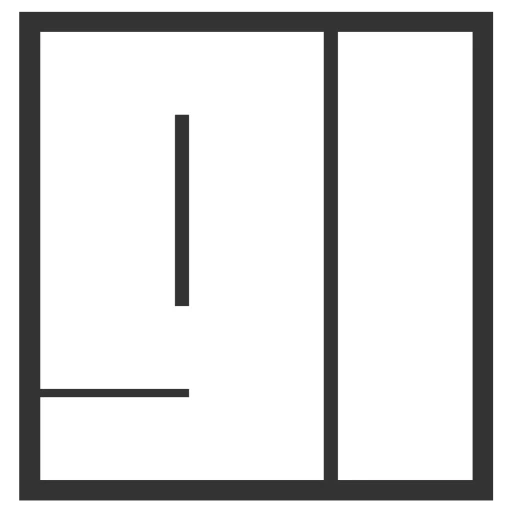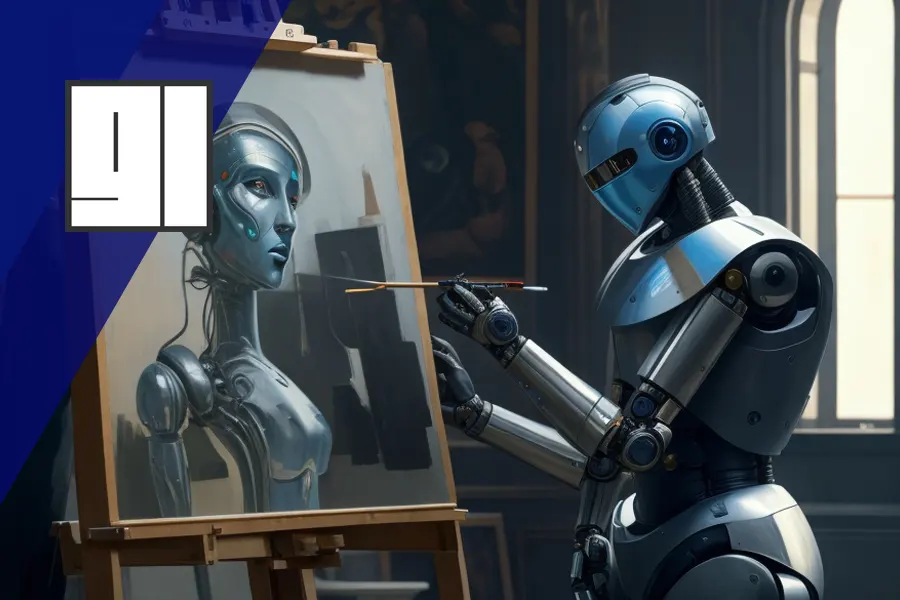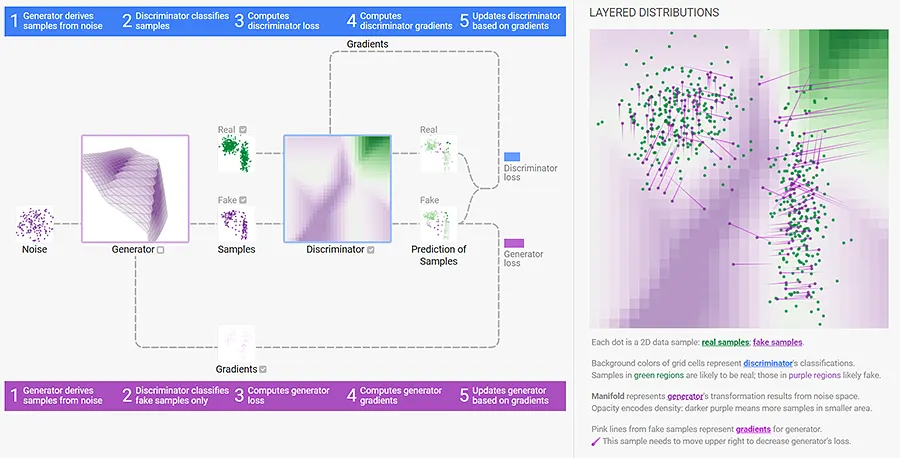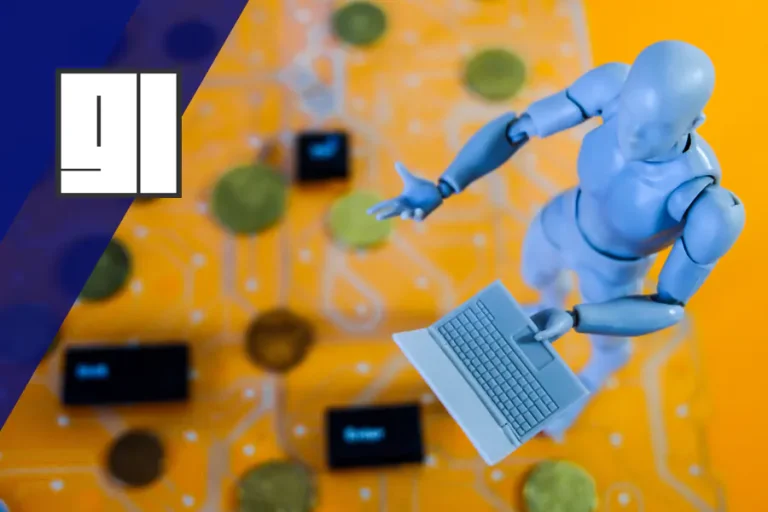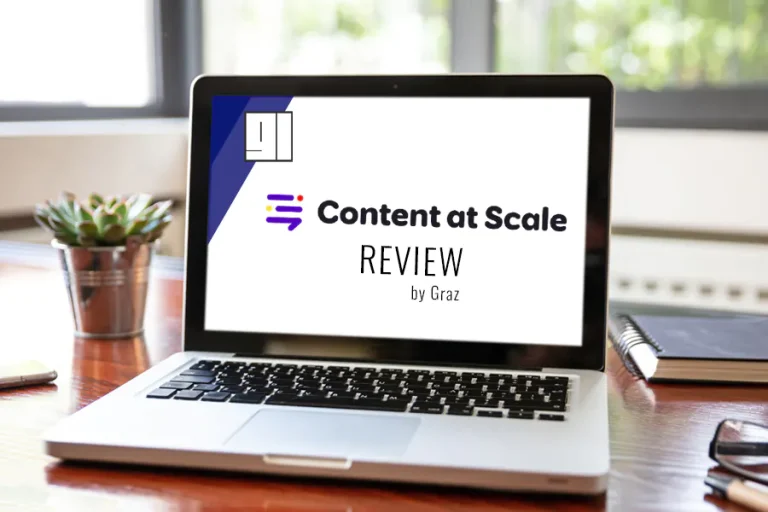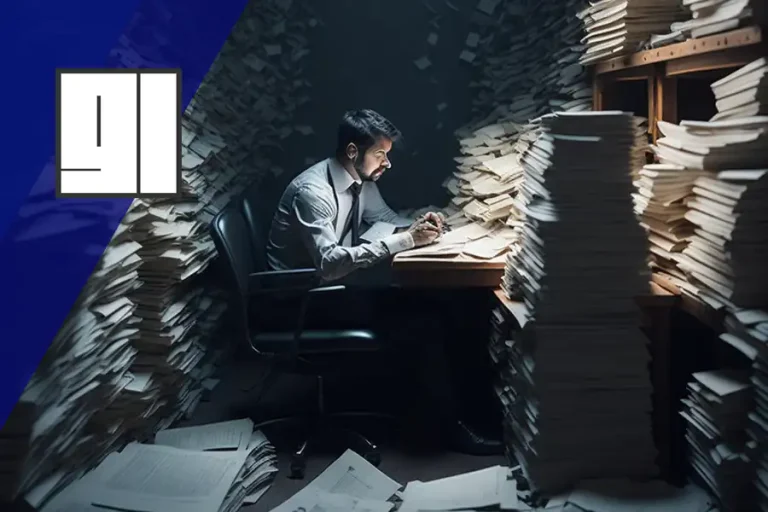What is AI Art: Creativity Meets Machine Learning
Artificial intelligence has been one of the most talked-about technological developments in recent years. It has profoundly impacted almost every facet of our lives, and the world of art is no exception. AI-generated art, also known as AI art, has become increasingly popular among artists and enthusiasts.
What’s In It For You?
- Techniques: Learn about the various AI methodologies and algorithms utilized in the creation of AI Art.
- Applications: Discover diverse fields where AI Art is being applied today, from digital platforms to traditional galleries.
- Understanding: Clarify common misconceptions about AI Art, including questions about authenticity and fears around its impact on traditional artistry.

This fascinating intersection between creativity and machine learning has opened up endless possibilities for artistic expression. So what is AI art?
Simply put, it is any artwork generated or assisted by artificial intelligence. This can take many forms: from traditional paintings created through neural networks to generative algorithms that produce intricate digital designs.
The output can be anything from abstract pieces to hyper-realistic images indistinguishable from those humans produce. While still considered a relatively new field, AI art has steadily gained attention in recent years due to its unique qualities.
Combining human creativity and machine learning brings an intriguing blend of traditional art-making techniques and cutting-edge technology. As such, it has attracted legions of artists keen to explore new methods for creating and exploring artistic concepts.
What is AI art? Influence on the Art World
AI’s influence on the world of art dates back several decades ago, when computer programs were first used for artistic purposes. However, it wasn’t until recent years that we saw an explosion in popularity for this new medium – thanks largely to advances in machine learning technology.
The history of AI-generated artworks can be traced back to the early 1970s when Harold Cohen developed AARON – a program capable of producing original artwork based on predefined rules. Since then, many programmers have developed software that generates output using innovative algorithms.
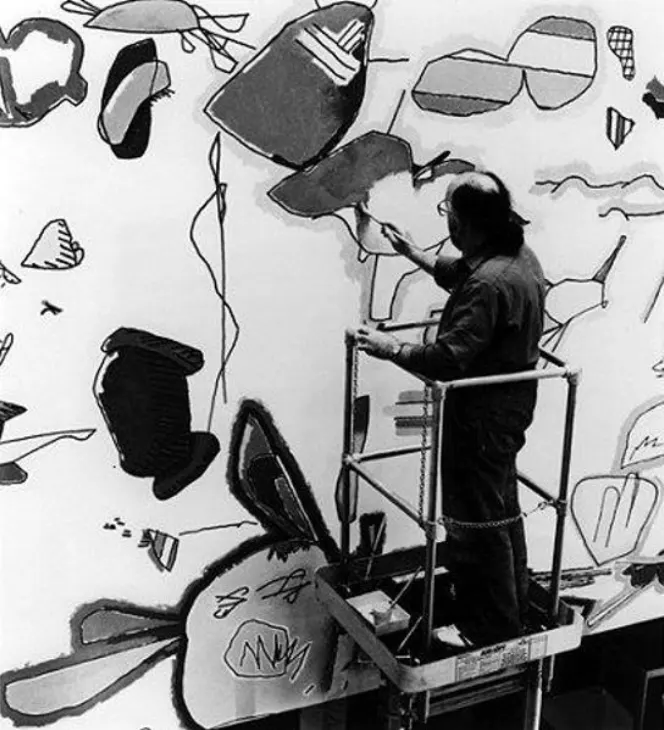
Source: Image by computerhistory.org
Harold Cohen coloring the forms produced by the AARON drawing “Turtle” at the Computer Museum, Boston, MA, ca. 1982.
Today, we see many examples where AI-generated artworks showcase human-like creativity and push beyond our limits – with some even selling for staggering prices at major art auctions. As AI advances, it’s clear that this art form will continue to evolve and make its mark on the artistic world.
How AI Art Works
Overview of the process of creating AI-generated art
AI art is created through machine learning algorithms and computer-based programs that recognize patterns, learn from data, and create original output. The process begins with an artist feeding a dataset to the algorithm. The dataset can include anything from visual data, like images, to audio recordings.
From there, the algorithm analyzes the data to understand it and then uses this understanding to generate new content. The algorithm generates output by making predictions based on patterns it learns from the dataset.
For example, if an artist feeds in hundreds of images of flowers, the algorithm will analyze these images and develop its interpretation of what a flower looks like. It may then generate an image combining elements from all its learned interpretations.
Explanation of machine learning algorithms used in AI Art
Several types of machine learning algorithms are used in AI art creation, each with its own strengths and weaknesses. Some popular methods include:
- Neural Networks: A type of algorithm that is modeled after brain structure and function. Neural networks are good for recognizing complex patterns or relationships between different elements.
- Evolutionary Algorithms: An approach that simulates biological evolution to improve a solution over time gradually. Evolutionary algorithms are well suited for generating unique variations or combinations.
- Deep Learning: A subset of machine learning where neural networks with many layers analyze large datasets. Deep learning can be applied to many types of data inputs, such as text or images.
These algorithms allow artists to take advantage of innovative technology that would have been impossible just a few decades ago. They offer new ways for artists to explore their creativity while pushing the boundaries between human imagination and artificial intelligence innovation.
Types of AI Art
Understanding the different types of AI art can help you appreciate the creativity of this field. While there are many ways to categorize AI art, some popular methods include generative adversarial networks (GANs), neural style transfer, DeepDream, and evolutionary algorithms.
Generative Adversarial Networks (GANs)
One of the most popular methods for creating AI art is through generative adversarial networks or GANs. GANs consist of two deep neural networks that work together to create new images. The first network generates random images, while the second network tries to distinguish between real and generated images.
Through backpropagation, both networks learn from their mistakes and get better at producing realistic images. Once trained, a GAN can generate entirely new images that look like humans created them.
Neural Style Transfer
Another technique used in AI art is neural style transfer. This method combines two images into a single image with a new style. It feeds an image through a deep neural network that extracts features from the content and style image.
The resulting image has the same content as the original but with the style of another image. This technique has been used to create some stunning pieces of art that blend different styles in unique ways.
DeepDream
DeepDream is another type of AI art that uses computer vision algorithms to find and enhance patterns in existing images. It works by starting with an existing image and applying small changes based on what the algorithm finds interesting.

Source: Image by deepai.org
Imagine you’ve taught a computer to recognize faces and different things in pictures. Now, if you use this learning in the opposite way on a new picture, the computer will make the details of that picture bigger and bolder, making the picture look like something from a dream.
Over time, these changes add up until the final result looks like something entirely new. While DeepDream was originally developed as an internal tool for Google, many artists have since used it to create surreal works of art.
Evolutionary Algorithms
Evolutionary algorithms are a type of AI art that mimics the process of natural selection. In this technique, the computer generates multiple variations of an image and then selects the best ones based on a set of criteria.
The selected images are combined to create a new generation of images that are even better than the last. This process continues until a final image meets all the desired criteria.
Understanding these different types of AI art can help you appreciate how technology is being used to create new forms of artistic expression. Each method has its unique strengths and limitations, but together they represent some of the most exciting developments in contemporary art today.
The Role of Creativity in AI Art
The role of creativity in AI Art is to blend human ingenuity in curating the outputs of AI processes and to highlight how artists harness AI as a tool to amplify their artistic vision and push the boundaries of traditional art.
The Power of Human Creativity in AI Art
One common misconception about AI art is that machines are solely responsible for the creation process. However, this is only partially true. While the algorithms used in AI art generate results based on data fed to them, it takes a human artist to decide which results are worth keeping and how to use them creatively.
This means that while machines generate the raw output, it’s up to the human artist’s creativity to determine how these outputs can be used to create unique art pieces. Interestingly, many artists use AI to enhance their creative output rather than replace it.
Through machine learning algorithms, AI can analyze vast amounts of data and provide artists with new inspiration and ideas they may not have come up with otherwise. By combining human creativity with the power of technology, we’re seeing a new era of artistic creation that pushes beyond previous limitations.
Examples of How Artists Are Using AI to Enhance Their Creative Output
AI-generated artwork has become increasingly popular among artists who see it as an opportunity for exploration and experimentation. For example, digital artist Mario Klingemann uses GANs (Generative Adversarial Networks) to create pieces like “Memories of Passersby I,” depicting eerily realistic faces that never existed.

Source: Image by bloomberg.com
Another artist using AI as a creative tool is Sougwen Chung, who creates stunning pieces like “Drawing Operations” by collaborating with robotic arms equipped with neural networks. The result is an intricate dance between man and machine where both contribute equally to the final artwork.
These examples demonstrate how technology can augment human creativity rather than replace it entirely. Through collaboration between humans and machines, we can push boundaries and explore new artistic possibilities that were once unimaginable.
Ethical Considerations in AI Art
Let’s dive into the complex questions about who owns art made by AI and if such creations can truly be considered original and authentic.
Who Owns AI-Generated Art?
One ethical issue with AI-generated art is the question of ownership. Who owns the rights to a piece of art created by an algorithm?
Is it the artist who programmed the machine or the machine itself? This is a complex issue that has yet to be fully resolved.
Some argue that since a human did not create it, it cannot be copyrighted, while others argue that a human created the algorithm and, therefore, should have copyright protection. As more and more artists experiment with AI in their work, this issue will only become more pressing.
The Authenticity of AI-Generated Art
Another ethical concern with AI-generated art is its authenticity. Because an algorithm created it, there’s a question of whether or not it can be considered “art.” Some may argue that art must be behind it and machines lack intentionality. Their creations can’t be considered true art. Many algorithms are based on pre-existing data sets, so some may question whether these works are truly original.
Exploration of the Potential Impact on the Job Market for Artists
The Creation of New Opportunities
While some may fear AI-generated art will replace traditional artists and creatives, others believe this new technology could create new opportunities for innovative thinkers. For example, artists could use these algorithms to help them create more complex pieces or work faster. Additionally, startups focusing on developing these algorithms will likely require creative individuals to help program them.
The Need for Adaptation
However, there’s no denying that as technology advances and evolves at breakneck speeds, every industry will need to adapt to stay relevant. This means that traditional artists and creatives will likely need to learn new skills to keep up with the changing landscape.
The Importance of Creativity
Ultimately, creativity will always be a crucial component in creating art no matter how advanced technology becomes. While AI-generated art may create controversy around ownership and authenticity, it’s important to remember that humans are still responsible for programming these machines and deciding how they’re used. As long as humans remain at the forefront of this technology, there will always be opportunities for creative individuals to thrive in this field.
The Future of AI Art: A Technological Revolution in the Art World
Artificial intelligence has already significantly impacted the art world, but we are just scratching the surface of its potential. As technology evolves, AI-generated art will become increasingly sophisticated and nuanced. From 3D-printed sculptures to virtual reality installations, we can expect exciting works that challenge our perceptions of what art can be.
One prediction is that AI-generated art will become increasingly interactive and immersive. Artists may use AI algorithms to create responsive, dynamic pieces that change in real-time based on data inputs such as audience reactions or environmental factors.
We could see large-scale installations incorporating machine learning to analyze and respond to human behavior in real time. Another potential development is the integration of AR and VR technologies into AI-generated art.
Imagine donning a headset and stepping into an entirely artificial world created by an algorithmic artist. The possibilities for creating new forms of interactive storytelling experiences are endless.
Adapting to Change: How Artists Will Keep Up with New Technologies
As technology advances at an unprecedented rate, artists must adapt quickly to keep up with new tools and techniques. While some may resist these changes as threats to traditional practices, others will embrace them as opportunities for innovation. Artists adapt by collaborating with technologists and data scientists specializing in machine learning algorithms.
Working together allows artists to leverage cutting-edge technologies while maintaining creative control. Another adaptation strategy is incorporating AI tools into existing workflows rather than relying solely on them for creative output.
For example, artists might use neural style transfer or GANs as preliminary sketching tools or inspiration generators rather than relying on them entirely for finished works. Ultimately, the success of an artist’s adaptation strategy will depend on their willingness to experiment and take risks with new technologies while still maintaining their creative vision.
Conclusion: The Future Looks Bright for AI Art
As we continue to explore the possibilities of AI art, there is no doubt that we will encounter new challenges and ethical considerations along the way. However, with an open mind and a willingness to embrace change, both artists and technologists can work together to create works of art that are truly groundbreaking.
Whether through interactive installations or virtual reality experiences, the future of AI-generated art will surely be exciting and awe-inspiring. As we continue to push the boundaries of what technology can do, let us always remember the timeless human element at the heart of all great works of art: creativity and imagination.
AI art is a fascinating and rapidly evolving field that challenges traditional notions of what constitutes art. While there are valid concerns about the impact of AI on the job market for artists and issues surrounding authenticity and ownership, with responsible use, AI can be a powerful tool for enhancing creativity.
One of the key takeaways from understanding AI art is the importance of human input in the creative process. Although machine learning algorithms can independently generate incredible works of art, it is still up to humans to provide the initial inspiration and guidance.
For example, an artist may input a set of parameters or styles they want their AI to work with, but it’s ultimately up to them to decide which pieces are worth keeping. Another takeaway is that AI offers exciting new opportunities for collaboration between humans and machines.
By embracing these new technologies, artists can push boundaries and explore new creative frontiers. We’re excited about the future of this field as it continues to grow and evolve.
There’s no need to fear or reject technology in favor of more traditional creative methods. Instead, let’s embrace these new tools as extensions of our creativity – after all, isn’t pushing boundaries what being an artist is all about?

Graz is a tech enthusiast with over 15 years of experience in the software industry, specializing in AI and software. With roles ranging from Coder to Product Manager, Graz has honed his skills in making complex concepts easy to understand. Graz shares his insights on AI trends and software reviews through his blog and social media.
